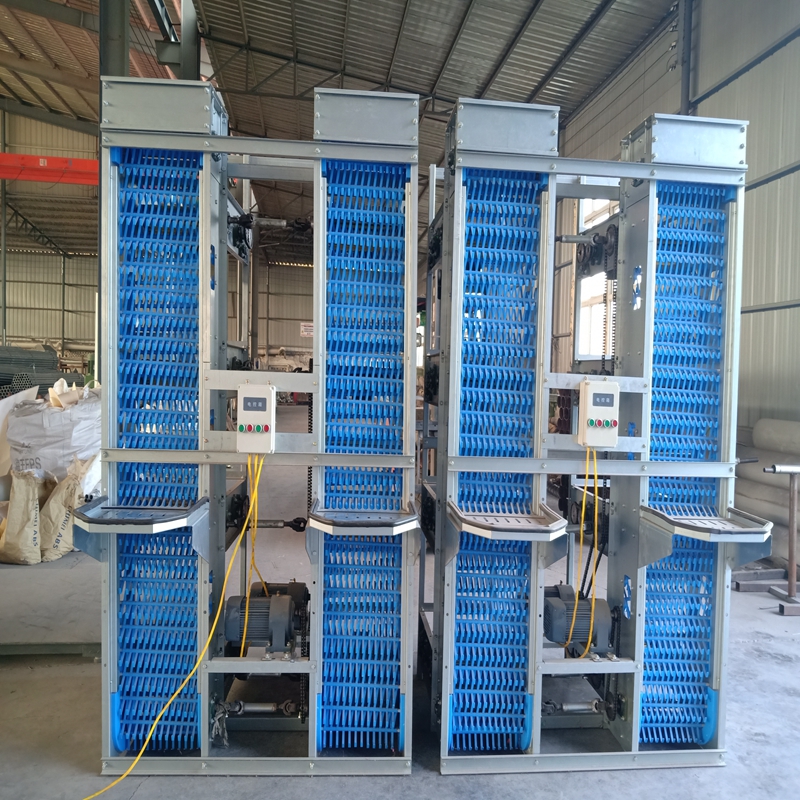rabbit breeding cage
Dec . 10, 2024 14:00 Back to list
rabbit breeding cage
Rabbit Breeding Cage Ensuring a Healthy Environment for Your Rabbits
When it comes to breeding rabbits, creating an optimal environment is crucial for the health and productivity of both the does (female rabbits) and the bucks (male rabbits). A well-designed rabbit breeding cage not only supports the reproductive needs of these animals but also ensures their overall well-being. Understanding the essentials of a rabbit breeding cage is vital for any rabbit breeder aiming for success.
Importance of Design
The design of a rabbit breeding cage plays a significant role in the breeding process. Breeding cages should provide enough space for the rabbits to move around comfortably, as cramped conditions can lead to stress and hinder reproductive performance. A standard rabbit breeding cage should ideally measure at least 24” x 36” for one pair of rabbits, with additional space allocated for each additional doe. Height is also important; a minimum height of 18” allows rabbits to stand upright comfortably.
Materials and Construction
When constructing a rabbit breeding cage, it's important to use safe, non-toxic materials. Galvanized wire is a common choice for the flooring and walls due to its durability and ease of cleaning, but it should have a smooth finish to prevent injuries. The cage should have solid resting areas where rabbits can lie down without being on a wire surface, which can cause sore hocks. Wooden panels can be used for the solid areas, ensuring they are untreated to avoid harmful chemicals.
Ventilation and Temperature Control
Proper ventilation is essential in a rabbit breeding cage to prevent respiratory issues and ensure a comfortable living environment. Cages should be placed in well-ventilated areas, and the design should include sufficient airflow while minimizing drafts that could chill the rabbits. Additionally, temperature control is crucial; rabbits thrive in cooler environments, ideally between 60°F to 70°F, so breeders should be aware of heat stress, particularly in warmer months.
rabbit breeding cage

Nesting Area
A critical feature of a rabbit breeding cage is the nesting area. Pregnant does require a private, cozy place to give birth, so providing a nesting box is essential. The nesting box should be about 12” x 12” and filled with clean straw or hay, which helps to keep the kits (baby rabbits) warm after birth. Ensuring the nesting box is easily accessible for the doe while being secure from external disturbances will encourage the doe to utilize it effectively.
Hygiene and Maintenance
Maintaining cleanliness in the rabbit breeding cage is vital for the health of the rabbits. Regular cleaning routines should include removing waste, refreshing bedding, and sanitizing surfaces. A clean environment helps to prevent diseases and promotes the overall well-being of the rabbits. It is essential to check for any signs of illness regularly, as early detection is key to effective treatment.
Social Interaction and Enrichment
Rabbits are social animals, and their breeding cage should facilitate interaction. While it’s vital to ensure that the pair is compatible, providing space for them to socialize safely during mating is beneficial. Enrichment activities like toys and tunnels can also be included to stimulate their minds and promote physical activity, which is important for their health and happiness.
Conclusion
Setting up an effective rabbit breeding cage requires careful planning and consideration. By prioritizing space, materials, ventilation, hygiene, and the rabbits’ social needs, you can create an optimal environment that encourages successful breeding and ensures the well-being of your rabbits. With the right attention to detail, breeding rabbits can be a rewarding venture, yielding healthy bunnies and contributing positively to the rabbit breeding community.
-
Hot Sale 24 & 18 Door Rabbit Cages - Premium Breeding Solutions
NewsJul.25,2025
-
Automatic Feeding Line System Pan Feeder Nipple Drinker - Anping County Yize Metal Products Co., Ltd.
NewsJul.21,2025
-
Automatic Feeding Line System Pan Feeder Nipple Drinker - Anping County Yize Metal Products Co., Ltd.
NewsJul.21,2025
-
Automatic Feeding Line System - Anping Yize | Precision & Nipple
NewsJul.21,2025
-
Automatic Feeding Line System - Anping Yize | Precision & Nipple
NewsJul.21,2025
-
Automatic Feeding Line System-Anping County Yize Metal Products Co., Ltd.|Efficient Feed Distribution&Customized Animal Farming Solutions
NewsJul.21,2025






